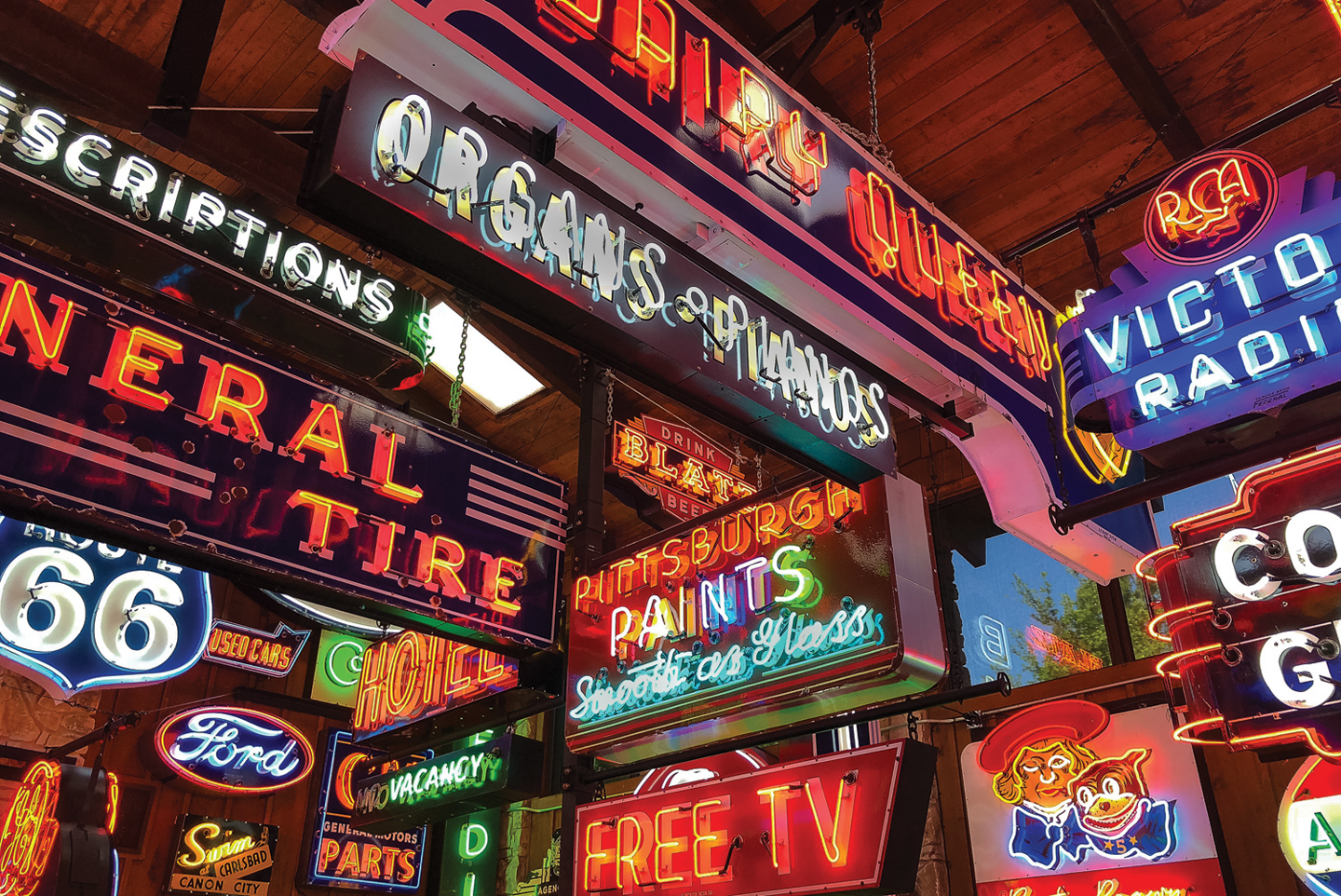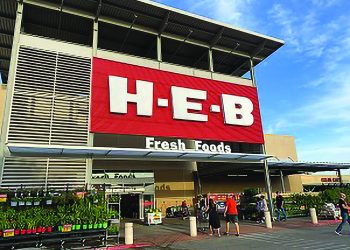[supsystic-slider id=66 position=”center”]
In a bit of a departure from our monthly classic car feature, here’s a look at how travelers in those vehicles across the country during the middle of the last century found food, gasoline and places to sleep.
It’s all to be discovered in what was once an indoor swimming pool area of the unoccupied house next door to Michael and Sandra Brown’s residence in North Arlington.
Readers may recall the cover story we did in 2014 on Michael’s collection of Corvettes that span the entire history of America’s Sports Car. They are kept in his 15-car garage that is decorated will all kinds of signs and other automobile memorabilia that adorn his museum.
Among them all are some neon signs that highlight the display – but nothing like what he has now acquired in the house next door that is an amazing array of Americana road art.
He explains his growing passion that has made him prominent in a hobby of what may be a dying art form: “It’s a connection to part of our past that likely will not be the same and a rationalization, I guess – but, I’m doing my small part in saving a few unique pieces of early to mid 20th century pop culture history.”
It began for Michael a few years ago when he visited his childhood hometown of Hugo, Okla. Behind the town’s old Frisco Depot that had become a museum he discovered the neon sign that once hung over the entrance to the People’s Store in the middle of downtown.
The double-sided porcelain sign lying in the weeds had lost all its neon, and the iconic Red Goose Shoes logo was missing from the top, but it all appeared salvageable.
He might have just taken a quick look and moved on, but the sign had a special meaning in his life experience. It was where he had gotten his first job as a 12-year-old, unloading merchandise, cleaning restrooms, and helping customers try on shoes.
Knowing it had to be his, he acquired it and located a restoration pro in Ladonia, struck a deal, and in a few weeks the sign was back to its original appearance and delivered to its new home in Arlington.
For the next few years it was the only one hanging in its latest location until he decided to acquire the Pontiac and Buick signs from an old dealership in Hugo – and his hobby grew from there.
His journey has taken him around the country looking for old originals, and he built his collection that today numbers almost a hundred signs, with some dating back to the origins of neon in America almost a century ago.
Old Route 66 spanning 2400 miles across the country from Chicago to the Santa Monica Pier on the West Coast is still a journey where historic neon can be found. Towns along the Mother Road were lit up with amazing examples of the advertising medium of colored glass throughout serving as guiding lights for motorists on their way to somewhere.
While Michael’s hobby is growing, there are not a lot of collectors due to the risks, handling problems and expense of acquiring and restoring the signs.
Transporting and mounting the really big ones requires a combination of skills Michael describes as “lifting a Sherman Tank with elements as fragile as raw eggs.”
His latest acquisition is the giant, 12-foot Paramount Pictures sign that had been sitting on the back lot of the studio in Hollywood (and is displayed prominently on the opening page of this article). This highly sought-after porcelain and neon collector’s prize dates back to the 1930s.
You can experience the whole story of nostalgic Americana by viewing Michael’s high-quality 15-minute YouTube TV video where he describes the details and history of his collection. Viewers can also see the animation that takes place on many of the signs and adds a dimension to the display we can’t achieve in these photographs. Just enter “Neon collection in Texas” in the Google search box, and it’ll take you right there.
















